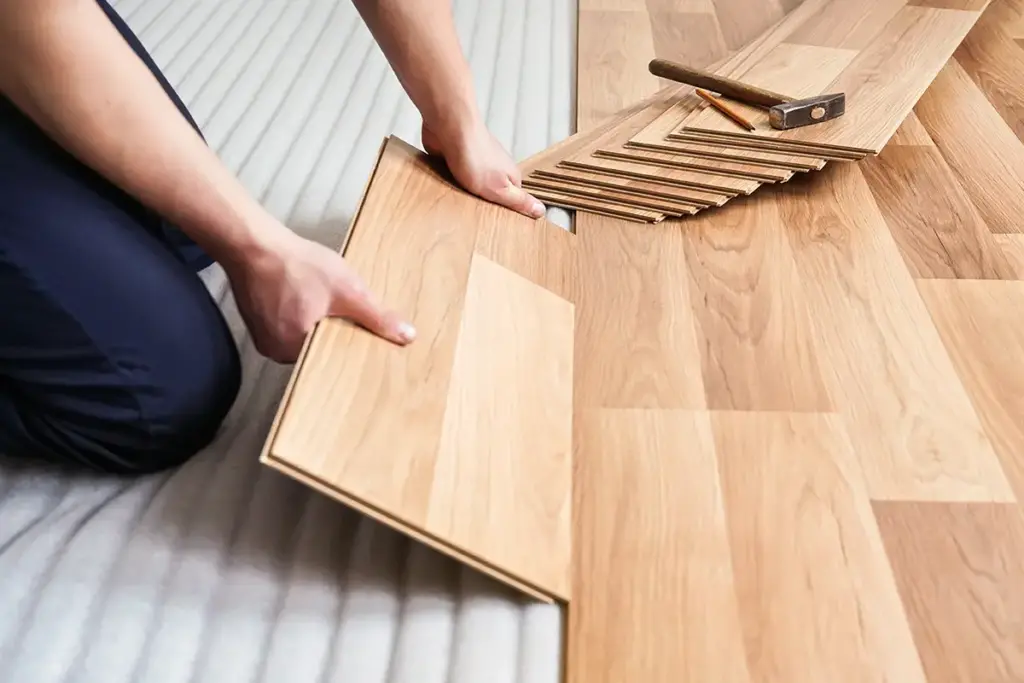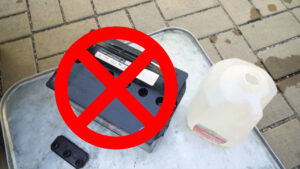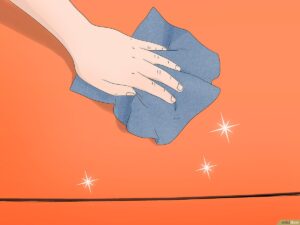Discover the different types of flooring and their impact on your living space. From traditional materials like tiles and parquet, to more modern options like vinyl and waxed concrete, each choice has its own unique advantages and disadvantages. Choose wisely to create the perfect atmosphere in your home.
Use epoxy to cover existing countertops to make them look like real stone | Step-by-step explanation
[arve url="https://www.youtube.com/embed/ftH6N1_1kGI "/]
What are the different types of flooring?
There are several types of flooring available on the market. Here are some of the most commonly used:
1. Visit tiles : Durable and easy to maintain, tiles are often used in kitchens, bathrooms and other rooms where hygiene is important.
2. The parquet : Wood flooring gives a warm, authentic feel to a room. It can be oiled, waxed or varnished to protect it from scratches and stains.
3. Laminate Laminate: Laminate is an economical, versatile floor covering that imitates the appearance of wood, stone or tile. It's easy to install and stain-resistant.
4. Vinyl Vinyl flooring is water-resistant and easy to clean, making it a popular choice for kitchens, bathrooms and high-traffic areas.
5. Carpeting: carpet adds comfort and warmth to a room. It's particularly suited to bedrooms and living spaces where you want to create a cozy ambience.
Each type of flooring has its advantages and disadvantages, so it's important to choose the one that best suits your needs and lifestyle.
What's the best floor covering?
The best floor covering will depend primarily on the room's intended use and your personal preferences. However, there are a few popular options to consider.
1. TilingTiling is a durable, easy-to-maintain choice. It's ideal for high-traffic areas like kitchens and bathrooms. It's available in a variety of styles, sizes and finishes, allowing you to personalize your space.
2. The parquet floorParquet brings warmth and elegance to a room. Different types of wood offer unique characteristics in terms of color and texture. Parquet requires regular maintenance to keep it in good condition.
3. LaminateLaminate flooring is an economical alternative to parquet. It imitates the texture and appearance of wood, while being easier to install and maintain.
4. VinylVinyl flooring is wear-resistant, easy to clean and available in a wide range of patterns and colors. It is particularly suitable for wet areas such as bathrooms and laundry rooms.
5. Polished concreteIf you're looking for a modern, industrial finish, polished concrete is an excellent option. It's durable, easy to clean and can be customized with specific shades and finishes.
Ultimately, the best flooring for your space will depend on your aesthetic preferences, your budget and the room's intended use.
What is the most resistant floor covering?
The floor covering considered to be the most resistant is tiles. Because of its composition, usually ceramic or stone, tile offers high durability and resistance to scratches, wear and impact. What's more, it's also moisture-resistant, making it an ideal choice for high-traffic areas such as lobbies, kitchens and bathrooms. With its many color, pattern and finish options available on the market, tile easily adapts to any decorating style. However, it should be noted that tile installation may require professional skills and a higher financial investment than other floor coverings.
What's the healthiest floor covering?
The healthiest floor covering is usually made from natural, sustainable materials. The wood solid wood is often considered one of the healthiest floor coverings, as it is produced from renewable resources and contains no harmful chemicals. The linoleum is also a popular choice as it is made from linseed oils, wood flour and natural mineral fillers. It is non-toxic and stain-resistant. The ceramic tiles and natural stone are also healthy options, as they are durable and easy to clean, and do not emit harmful volatile organic compounds (VOCs). However, it's important to do your own research and consult professionals to choose the flooring best suited to your specific environment and needs.
In conclusion, there are a variety of types of flooring, each with its own advantages and disadvantages. Ceramic and natural stone coverings offer exceptional durability, but can be costly and require regular maintenance. Wood flooring is warm and pleasant to the touch, but can be sensitive to water and requires UV protection. Vinyl and laminate coverings are affordable and easy to maintain, but may not offer the same luxurious feel as other options. Finally, concrete and tile flooring are durable and versatile, but can be cold and hard underfoot. It's important to consider your specific needs in terms of durability, comfort, style and budget when choosing the flooring that best suits your space.








